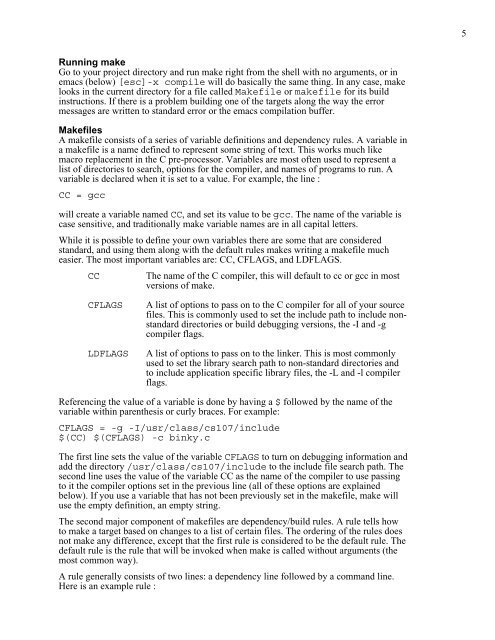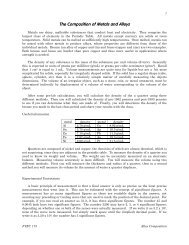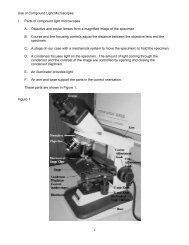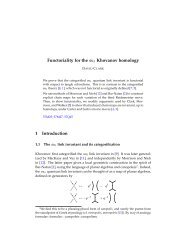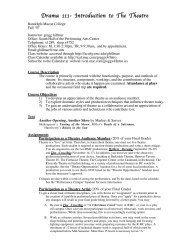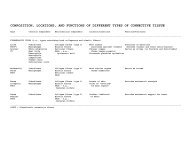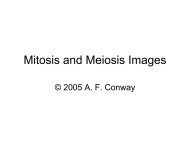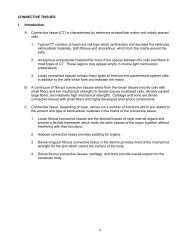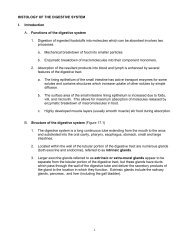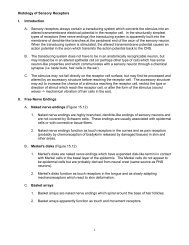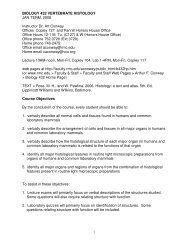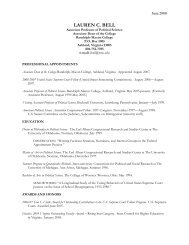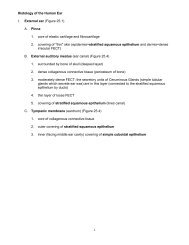Parlante's Unix Programming Tools - Faculty.rmc.edu
Parlante's Unix Programming Tools - Faculty.rmc.edu
Parlante's Unix Programming Tools - Faculty.rmc.edu
Create successful ePaper yourself
Turn your PDF publications into a flip-book with our unique Google optimized e-Paper software.
5Running makeGo to your project directory and run make right from the shell with no arguments, or inemacs (below) [esc]-x compile will do basically the same thing. In any case, makelooks in the current directory for a file called Makefile or makefile for its buildinstructions. If there is a problem building one of the targets along the way the errormessages are written to standard error or the emacs compilation buffer.MakefilesA makefile consists of a series of variable definitions and dependency rules. A variable ina makefile is a name defined to represent some string of text. This works much likemacro replacement in the C pre-processor. Variables are most often used to represent alist of directories to search, options for the compiler, and names of programs to run. Avariable is declared when it is set to a value. For example, the line :CC = gccwill create a variable named CC, and set its value to be gcc. The name of the variable iscase sensitive, and traditionally make variable names are in all capital letters.While it is possible to define your own variables there are some that are consideredstandard, and using them along with the default rules makes writing a makefile mucheasier. The most important variables are: CC, CFLAGS, and LDFLAGS.CCThe name of the C compiler, this will default to cc or gcc in mostversions of make.CFLAGSLDFLAGSA list of options to pass on to the C compiler for all of your sourcefiles. This is commonly used to set the include path to include nonstandarddirectories or build debugging versions, the -I and -gcompiler flags.A list of options to pass on to the linker. This is most commonlyused to set the library search path to non-standard directories andto include application specific library files, the -L and -l compilerflags.Referencing the value of a variable is done by having a $ followed by the name of thevariable within parenthesis or curly braces. For example:CFLAGS = -g -I/usr/class/cs107/include$(CC) $(CFLAGS) -c binky.cThe first line sets the value of the variable CFLAGS to turn on debugging information andadd the directory /usr/class/cs107/include to the include file search path. Thesecond line uses the value of the variable CC as the name of the compiler to use passingto it the compiler options set in the previous line (all of these options are explainedbelow). If you use a variable that has not been previously set in the makefile, make willuse the empty definition, an empty string.The second major component of makefiles are dependency/build rules. A rule tells howto make a target based on changes to a list of certain files. The ordering of the rules doesnot make any difference, except that the first rule is considered to be the default rule. Thedefault rule is the rule that will be invoked when make is called without arguments (themost common way).A rule generally consists of two lines: a dependency line followed by a command line.Here is an example rule :


